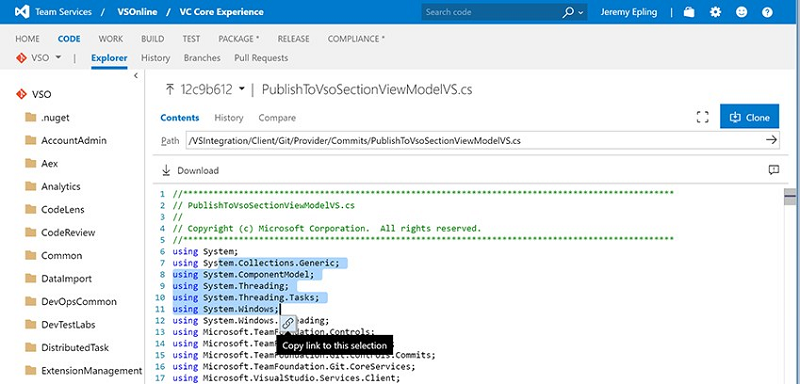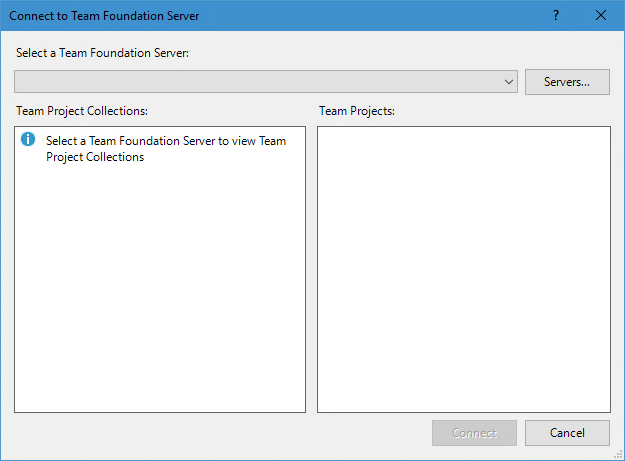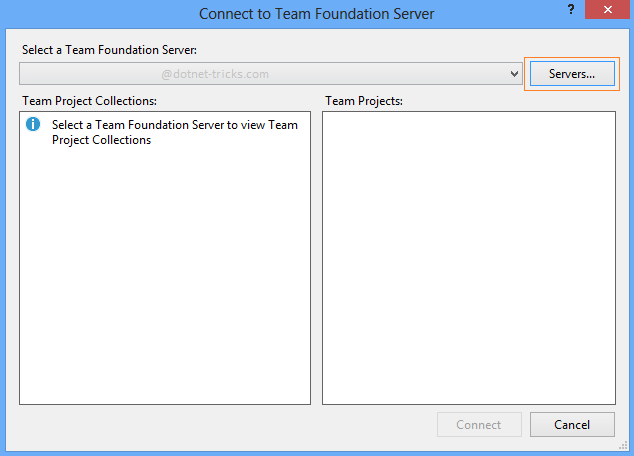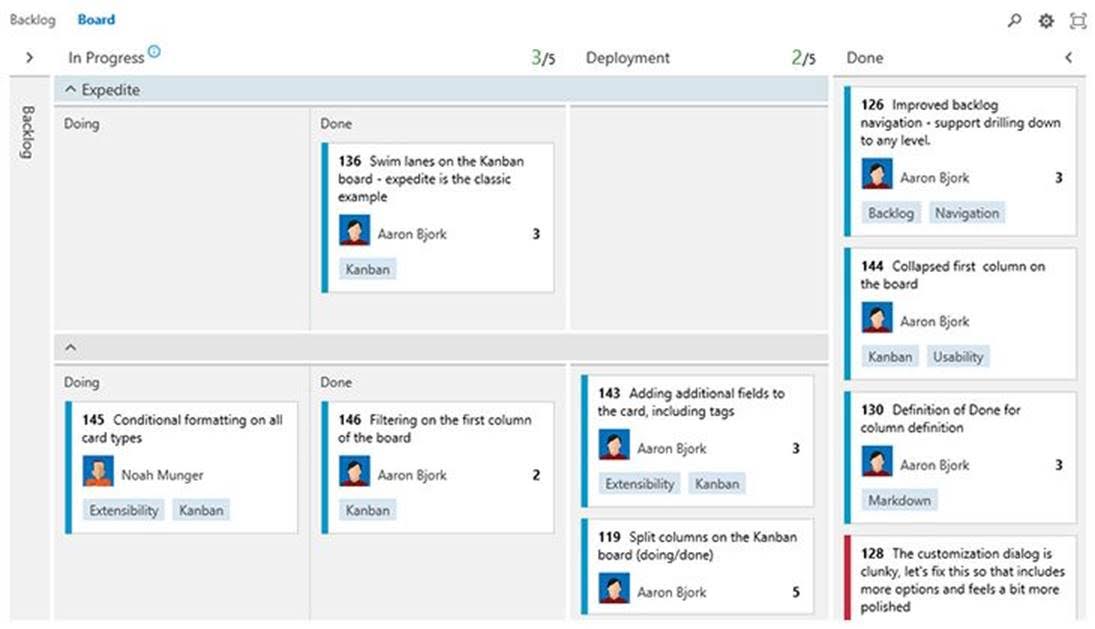Centriq Training
Team Foundation Server (often abbreviated to TFS) is a Microsoft product that provides tools and technologies designed to help teams collaborate and orchestrate their efforts to finish projects or create a product. It enables DevOps capabilities covering the entire application lifecycle. The main elements include source code management, requirements management, project management, reporting, testing, and release management capabilities. TFS is tailored to Visual Studio and Eclipse, but is also used as a back-end in other integrated development environments. Let’s take a closer look at this powerful product.
The main function of Team Foundation is to make it easier for teams to work together towards the completion of a product or project. The central theme when working in TFS is the team project. Each project is stored on the Team Foundation Server, and this provides a central location for the team to access and coordinate their work. To help facilitate this collaboration, each team project shares a project portal that is a Windows SharePoint website. This allows the team to collective store and share documents, control document versions, and use collaborative features like lists and calendars.
On-premise vs online versions
Microsoft Team Foundation Server
Previously known as Team Foundation Server (TFS), Azure DevOps Server is a set of collaborative software development tools, hosted on-premises.
There are two different forms of TFS: online or on-premises. The online version is called Azure DevOps. This is backed by Microsoft Azure, the company’s cloud platform. Azure DevOps does not require a setup and employs the same code as the on-premises version. It will also include the product’s most recent features. After a user signs in via a Microsoft account, he or she can start creating projects and building a team. One advantage the online version of TFS has over the on-premises version is that new features are added to the cloud version first. The on-premises versions will then get the updates later and on cyclical basis, approximately every 3 months.
Getting started with TFS

Getting started with working in Team Foundation will depend on what your role is on the particular project you are engaged in. Administrators are typically the ones who start out by setting up the servers and granting permissions. Project leads will then build new team projects, assign roles and responsibilities, and track work. Then the rest of the project team begins work on the items assigned to them.
Microsoft Team Foundation Server 2010 Service Pack 1 Summary. This article describes information about Team Foundation Server (TFS) 2010 Service Pack 1 (SP1). The largest component of the TFS 2010 SP1 is the set of core product changes that are needed to enable our Visual Studio Team Foundation Server 2010 and Project Server Integration Feature. I have a.Net Webforms code base with thousands of files. I am the only person who uses this code base. In the past, I've used Team Foundation Server to back it up just because I thought it would be a good idea. I have since bought a new computer and gotten lazy with respect to checking in code. Visual Studio IDE Visual Studio for Mac Visual Studio Code To continue downloading, click here Microsoft Visual Studio Team Foundation Server 2017 Product Family Pre-Release Software (RC) 2017-10-11T16:46:11-07:00.
Team foundation makes it easy for the project team to manage all source files for each particular project. Source control features include check-ins on a one change at a time basis, branching and merging, shelving, and check-in policies.
Managing builds
Team Foundation Build employs build types for creating a solution or a set of solutions in a distributed environment. Build types enable testing, provide reports, and are created by a TSF administrator. Team Foundation Build is part of Visual Studio Team Foundation Server. This allows enterprise build managers to synchronize sources, compile the application, analyze coded, release builds on a file server, and publish the build reports. Result data is migrated to the warehouse for historical reporting.
Necessary TFS skills
Working in TFS requires knowledge in a variety of different technologies, including but not limited to installation and deployment in multiple topologies, Best Practices Analyzer to validate deployment, reporting and creating custom Excel reports, and configuring data warehouse and OLAP cube refresh and rebuilds. Centriq Training – a Gold Microsoft Training Partner – utilizes Microsoft Official Curriculum and Microsoft Certified Trainers to offer courses specifically for Microsoft Team Foundation Server.
You can find the list of all available Team Foundation Server classes here. Have questions? Need guideance? Contact us by email, phone at 913.322.7062 / 314.644.6400, or by completing the following form.
 Centriq Training
Centriq TrainingTeam Foundation Server (often abbreviated to TFS) is a Microsoft product that provides tools and technologies designed to help teams collaborate and orchestrate their efforts to finish projects or create a product. It enables DevOps capabilities covering the entire application lifecycle. The main elements include source code management, requirements management, project management, reporting, testing, and release management capabilities. TFS is tailored to Visual Studio and Eclipse, but is also used as a back-end in other integrated development environments. Let’s take a closer look at this powerful product.
The main function of Team Foundation is to make it easier for teams to work together towards the completion of a product or project. The central theme when working in TFS is the team project. Each project is stored on the Team Foundation Server, and this provides a central location for the team to access and coordinate their work. To help facilitate this collaboration, each team project shares a project portal that is a Windows SharePoint website. This allows the team to collective store and share documents, control document versions, and use collaborative features like lists and calendars.
On-premise vs online versions
There are two different forms of TFS: online or on-premises. The online version is called Azure DevOps. This is backed by Microsoft Azure, the company’s cloud platform. Azure DevOps does not require a setup and employs the same code as the on-premises version. It will also include the product’s most recent features. After a user signs in via a Microsoft account, he or she can start creating projects and building a team. One advantage the online version of TFS has over the on-premises version is that new features are added to the cloud version first. The on-premises versions will then get the updates later and on cyclical basis, approximately every 3 months.
Getting started with TFS
Getting started with working in Team Foundation will depend on what your role is on the particular project you are engaged in. Administrators are typically the ones who start out by setting up the servers and granting permissions. Project leads will then build new team projects, assign roles and responsibilities, and track work. Then the rest of the project team begins work on the items assigned to them.
Team foundation makes it easy for the project team to manage all source files for each particular project. Source control features include check-ins on a one change at a time basis, branching and merging, shelving, and check-in policies.
Managing builds
Team Foundation Build employs build types for creating a solution or a set of solutions in a distributed environment. Build types enable testing, provide reports, and are created by a TSF administrator. Team Foundation Build is part of Visual Studio Team Foundation Server. This allows enterprise build managers to synchronize sources, compile the application, analyze coded, release builds on a file server, and publish the build reports. Result data is migrated to the warehouse for historical reporting.
Microsoft Teams On A Mac

Necessary TFS skills

Working in TFS requires knowledge in a variety of different technologies, including but not limited to installation and deployment in multiple topologies, Best Practices Analyzer to validate deployment, reporting and creating custom Excel reports, and configuring data warehouse and OLAP cube refresh and rebuilds. Centriq Training – a Gold Microsoft Training Partner – utilizes Microsoft Official Curriculum and Microsoft Certified Trainers to offer courses specifically for Microsoft Team Foundation Server.
Microsoft Team Foundation Server For Mac Book Free
You can find the list of all available Team Foundation Server classes here. Have questions? Need guideance? Contact us by email, phone at 913.322.7062 / 314.644.6400, or by completing the following form.



